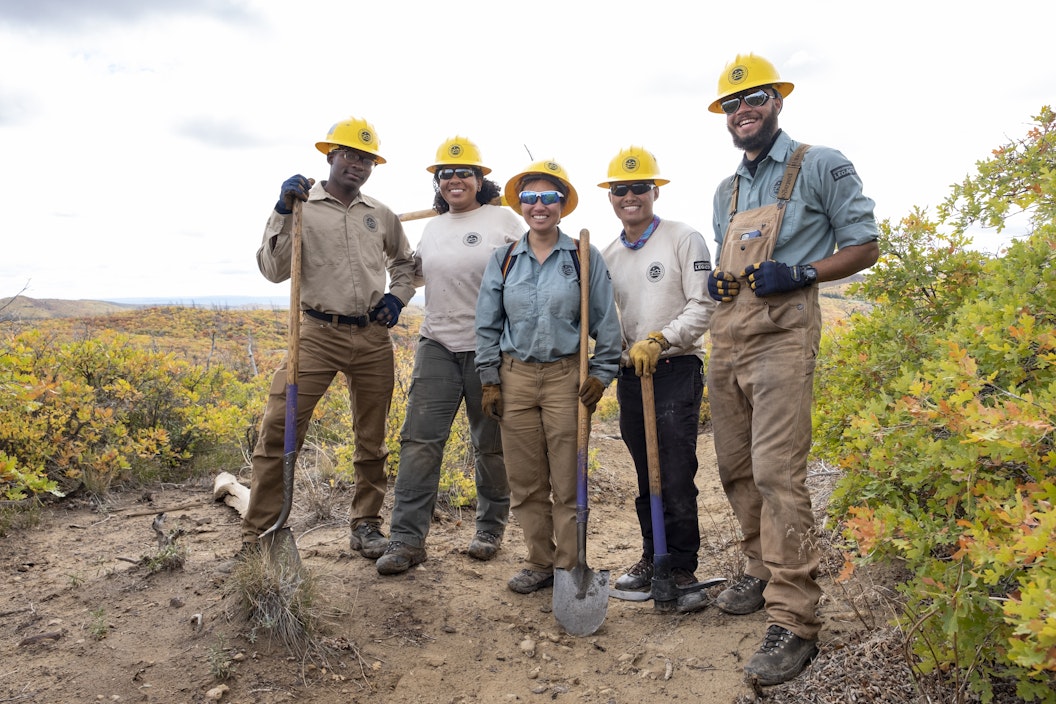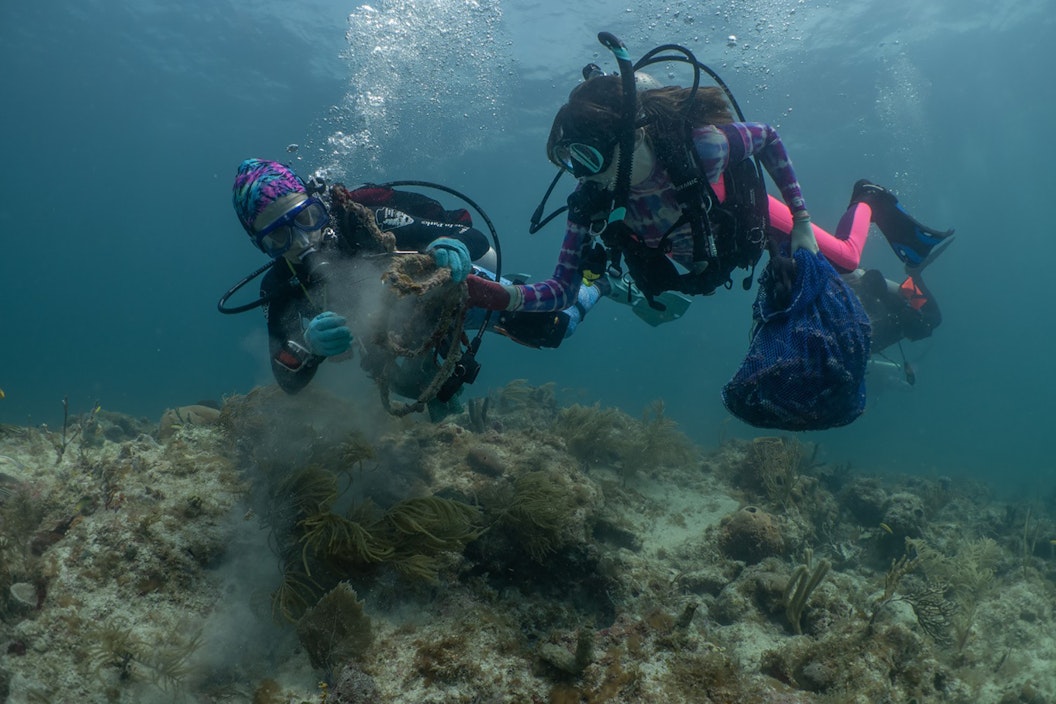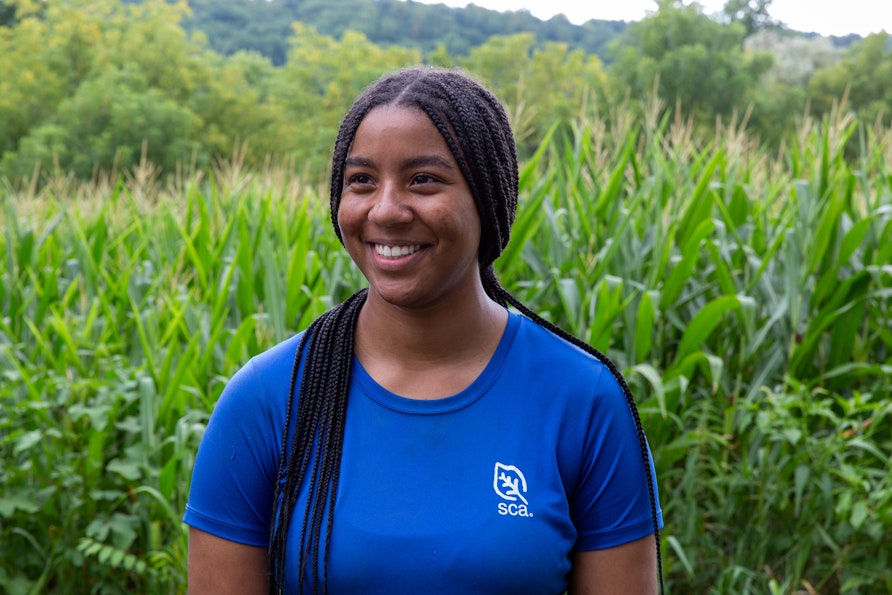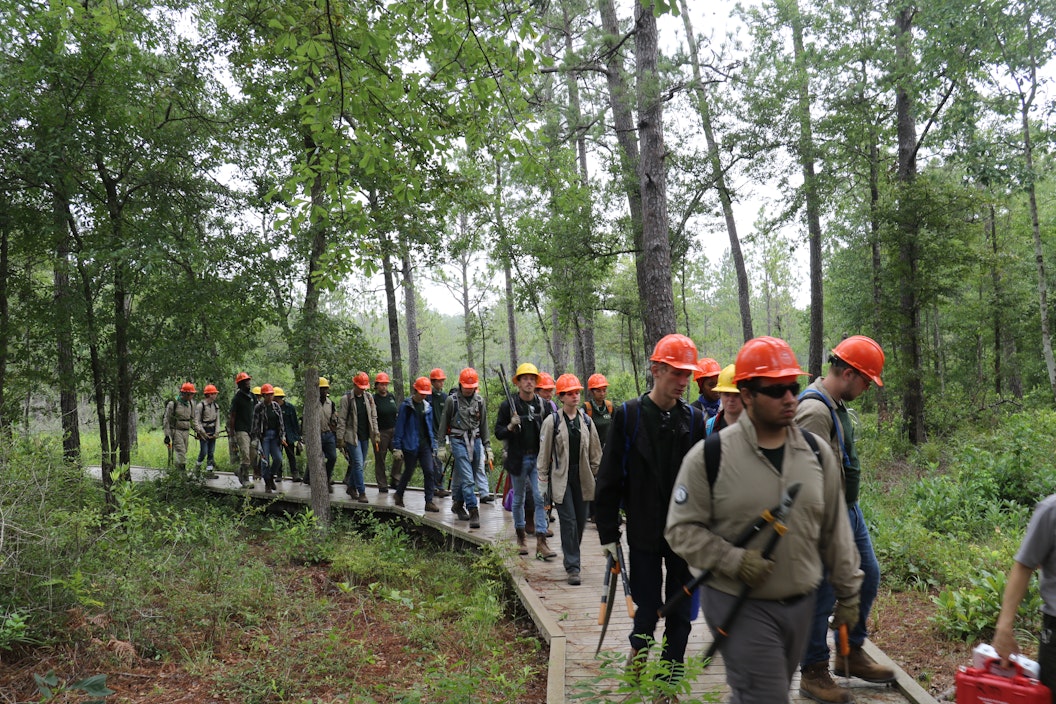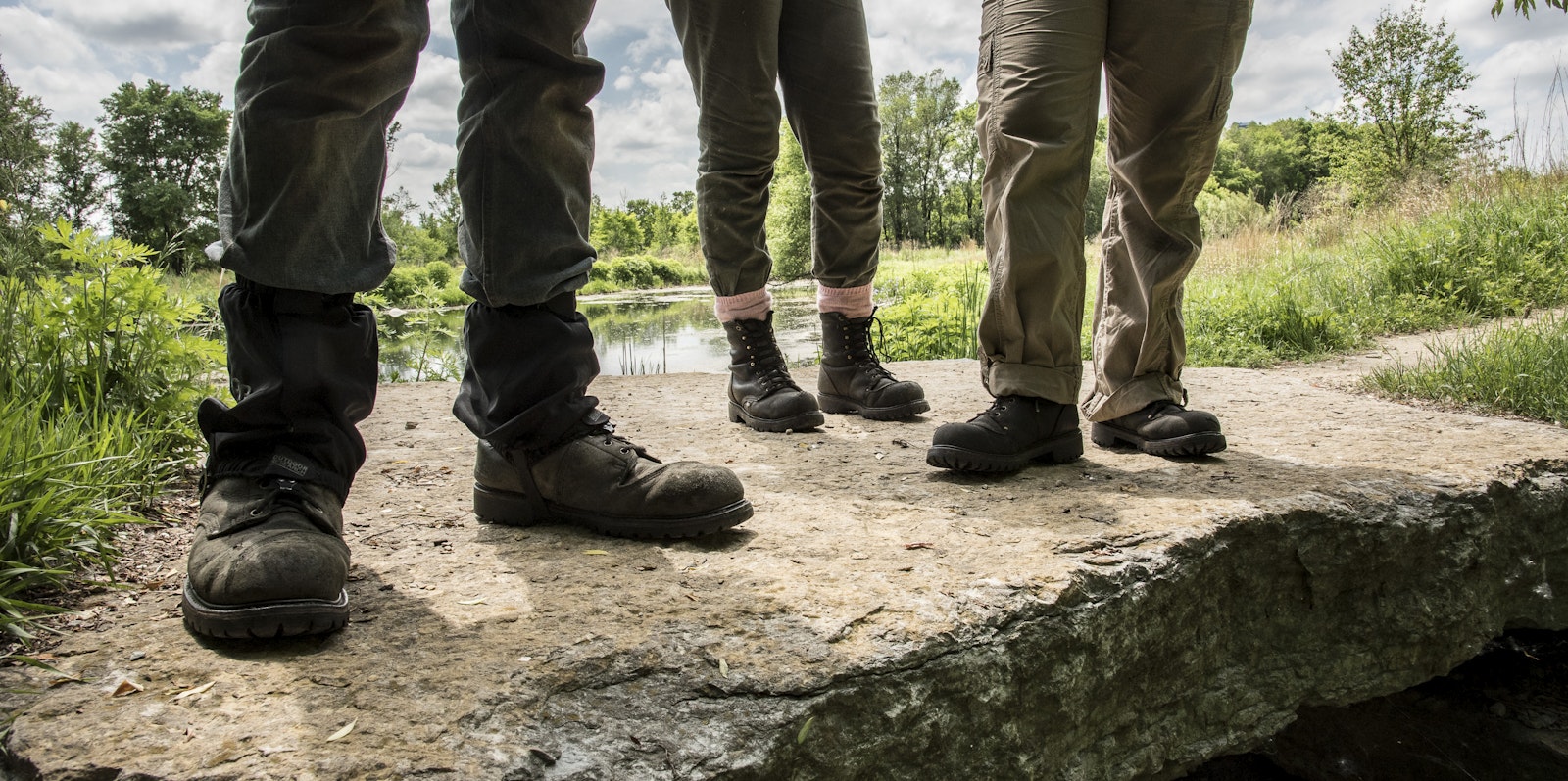
“We’re Still Here”
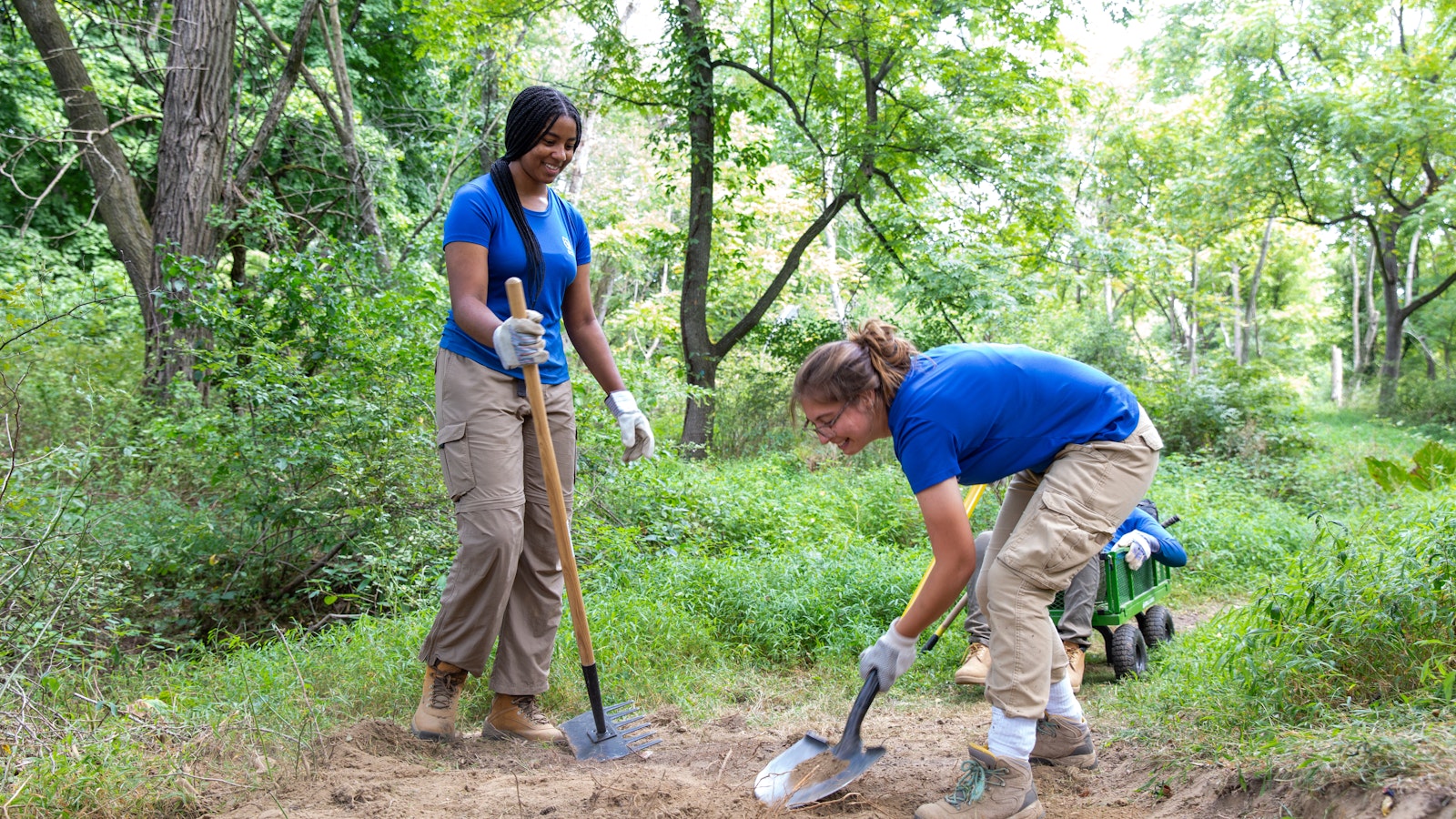
.
.
Musconetcong Wild and Scenic River courses through western New Jersey’s highlands. The river is home to water buffalo and shad, and on any given day, you’ll find fishermen along the banks and paddlers working their way down stream.
You may also find Chief Vincent Mann, Turtle Clan Chief of the Ramapough Luunape Nation along the banks of the river. Mann is at the forefront of New Jersey’s environmental justice movement and operates a nonprofit farm used for both sustenance and to recover the Ramapough Luunape’s cultural farming practices. Seemingly with more than 24 hours in a day, Mann has also been instrumental in restoring and preserving the Musconetcong Wild and Scenic River and his tribe’s ancestral land surrounding the river.
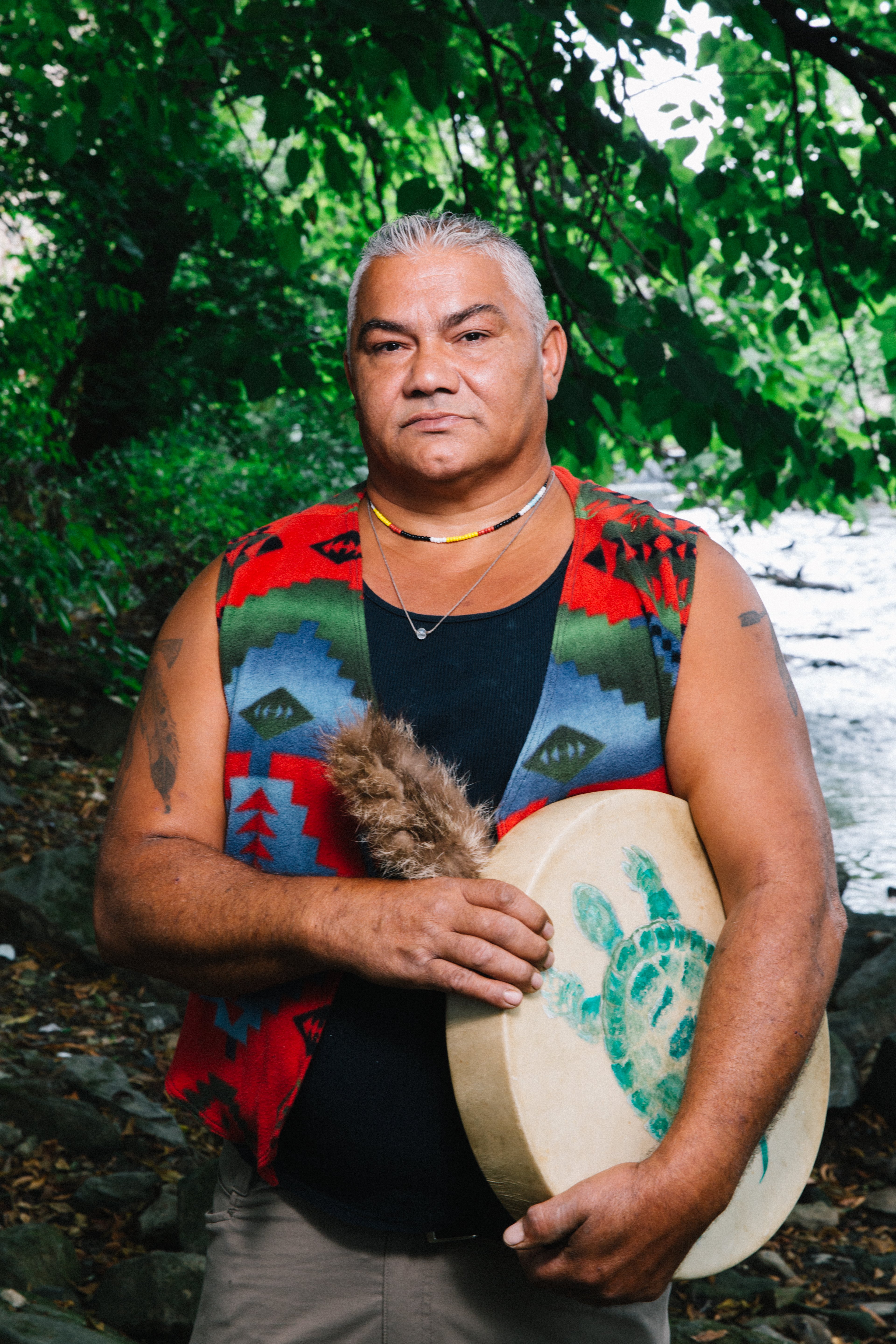
The Musconetcong Wild and Scenic River is one of 18 Congressionally designated Partnership Wild and Scenic Rivers. These public-private partnerships recognize and celebrate nationally significant rivers in areas with mostly private land and no new federal land acquisition.
At each river, the National Park Service (NPS) forms a cooperative relationship with a local organization to promote and protect the river. At Musconetcong, that’s the Musconetcong Watershed Association (MWA). Today, Mann, MWA, the Student Conservation Association (SCA), the National Park Foundation (NPF), and NPS are part of a widespread community collaboration to preserve and protect the land alongside the river.
“Having the opportunity to work so closely with like-minded people, who have an Indigenous way of thinking, was really inspiring to us," said Mann.
The collaboration is helping repair 1.8 miles of trails along the river, creating access to land while carefully preserving the Ramapough Luunape Nation’s ancestral sites, including ceremonial stone landscapes and sacred land. The Musconetcong Watershed Association also hopes to add Indigenous language to signage in the future.
Preserving sacred land and protecting the unspoiled land and wildlife, all while creating visitor access, is no easy task. And an unlikely team of young stewards were on the job.
Repairs, Restoration, and Reinforcements
Four high schoolers poured out of a white transit van parked next to the Asbury Mill. They were joined by their two team leads and an additional member, in addition to a trunk full of helmets, backpacks, and protective pads, and eyewear.
The team was a SCA service corps crew. Working for multiple weeks through the partnership with the Musconetcong Watershed Association and Chief Mann — and funded through NPF — the crew was the key to the trail’s restoration.

While the trail was laid out 12 years ago, it wasn’t managed until recently. After years of overgrowth, this collaboration marks the first concerted effort to restore the trail.
Currently, parts of the trail are inaccessible — with gaps, holes, and degrading bridges. And even parts of the trail that are open are often difficult to walk and overgrown.
Repairing bridges, filling muskrat holes, patching split rail fencing, as well as restoring and reinforcing the riverbank, the crew’s work is a critical part of the partnership that will make the trail accessible to visitors for the first time in years.
A Win-Win
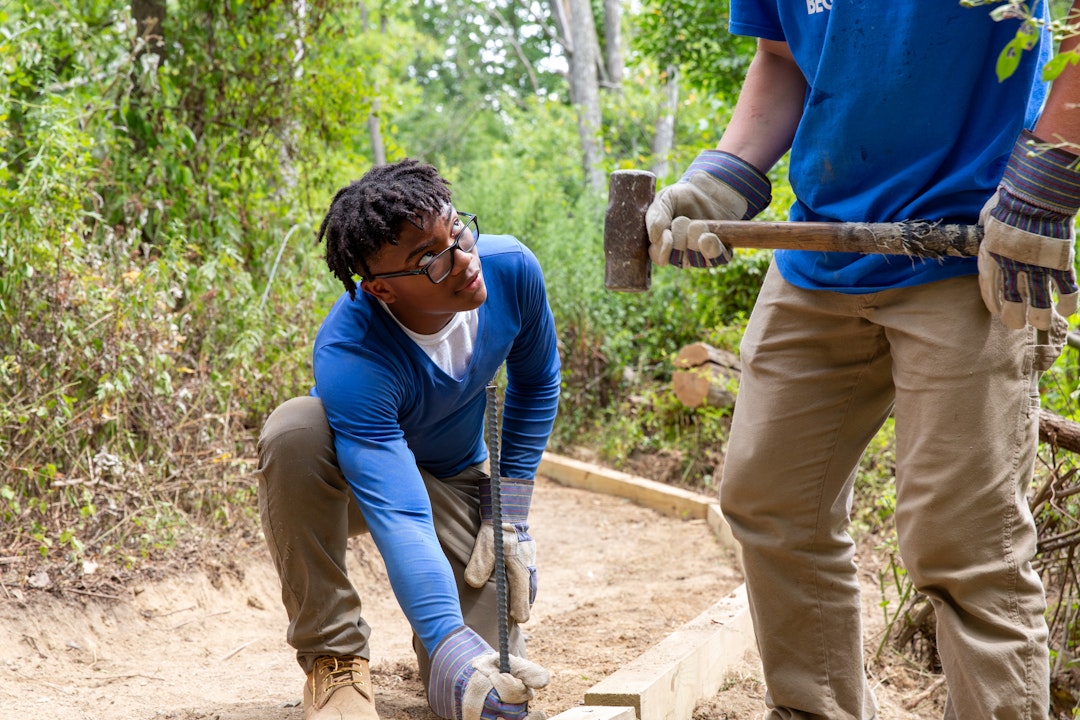
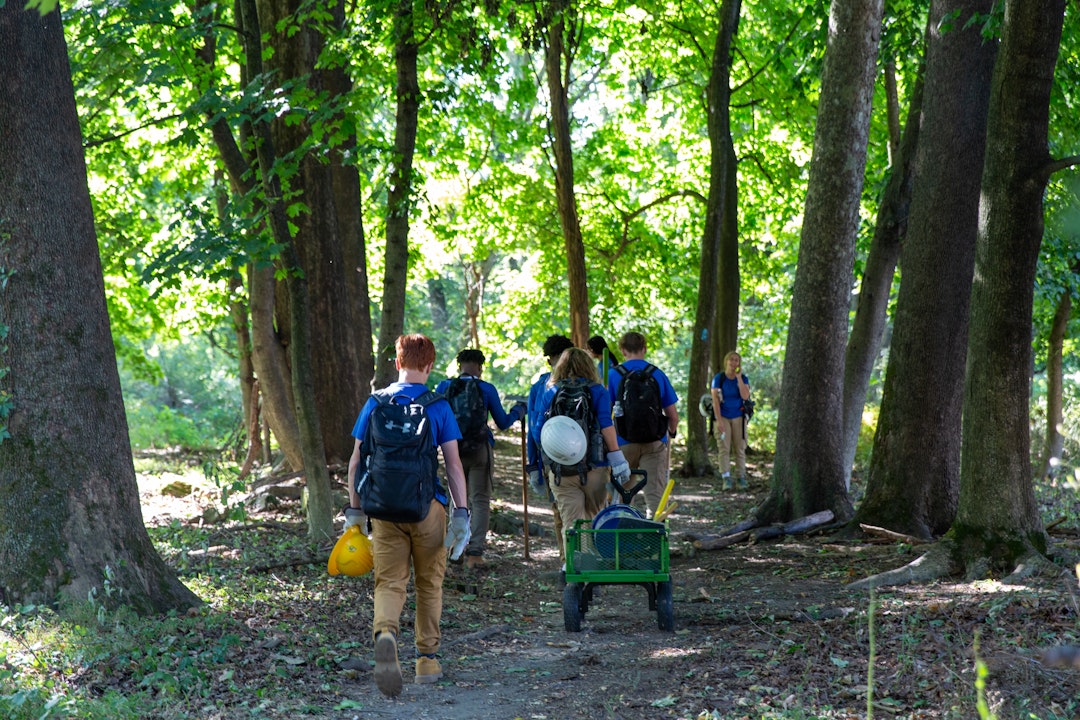
While MWA first considered hiring individual laborers to complete the work, they found the perfect partner in SCA.
Instead of MWA having to manage the daily work and provide oversight, SCA leadership and team leads who are well trained in this work were able to manage the project.
It’s a “win-win” for the students and the land, says Pablo Galesi, program coordinator at SCA for the New York and New Jersey programs. “[SCA] comes with decades of experience. We’re pretty much a self-contained unit. We train our leaders and we have those leaders then carry their knowledge over to members.”
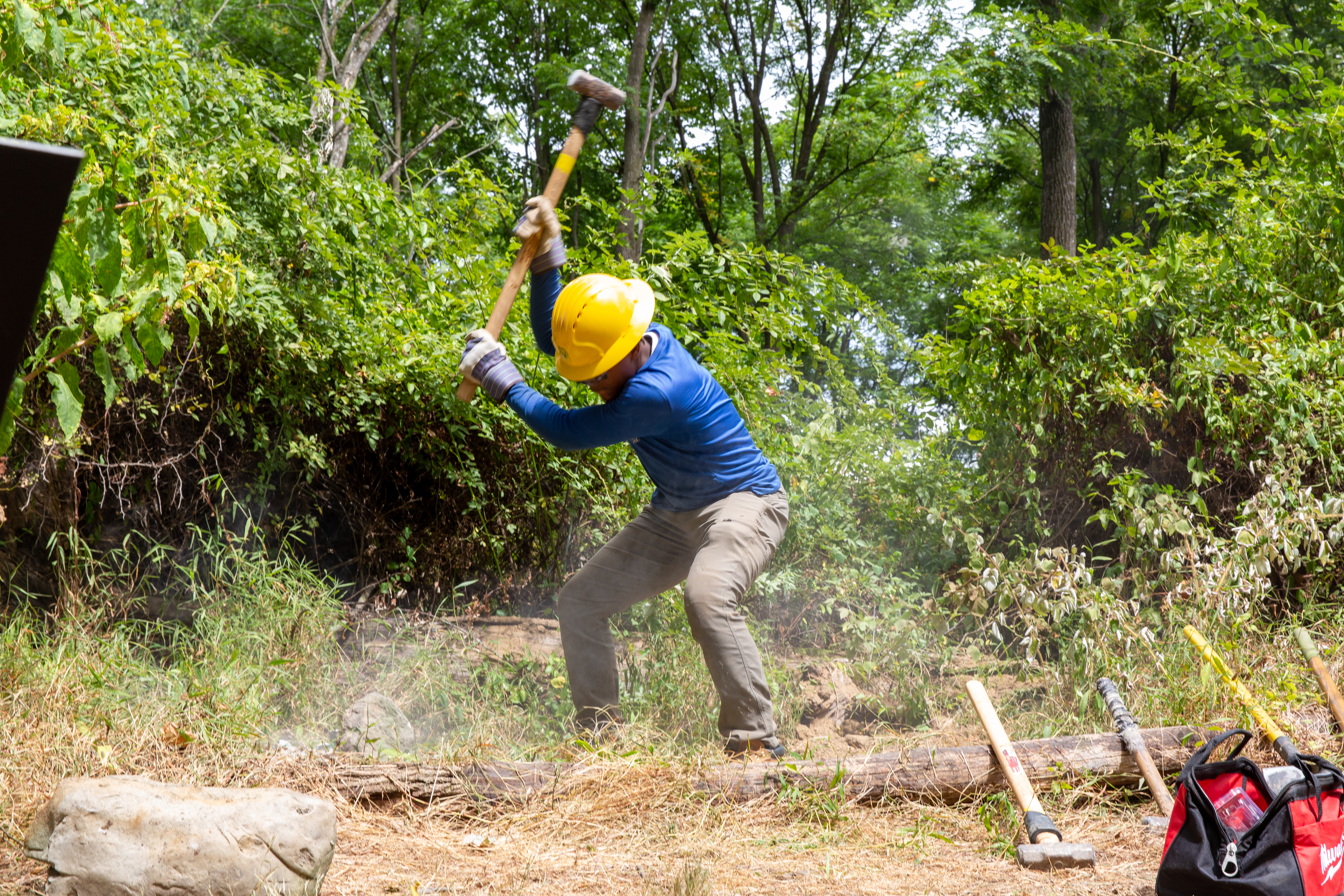
SCA helps recruit high school students and young adults around the country for various conservation projects, both on national park land and other natural spaces. Corps members are funded through partnerships like that with NPF, and in turn SCA can provide an affordable option for nonprofits like the MWA. In turn, the students leave with teamwork and communication skills applicable to a job in conservation, or any field.
“They come in thinking it’s a job for them and a pay check. They’re not looking at it as a team experience initially. And then they see what teamwork is and why it’s important in this kind of work,” said Galesi. “And there’s a great sense of pride in the completion of a project, and oftentimes with trail work or any kind of conservation work, they can come back and see their work years later. There’s a lot of joy in that experience — in coming back and seeing your work working.”
In addition to the job skills, this crew also learned the importance of climate justice and land restoration. For one crew member, that experience was particularly personal.
Restoring Her Ancestral Land
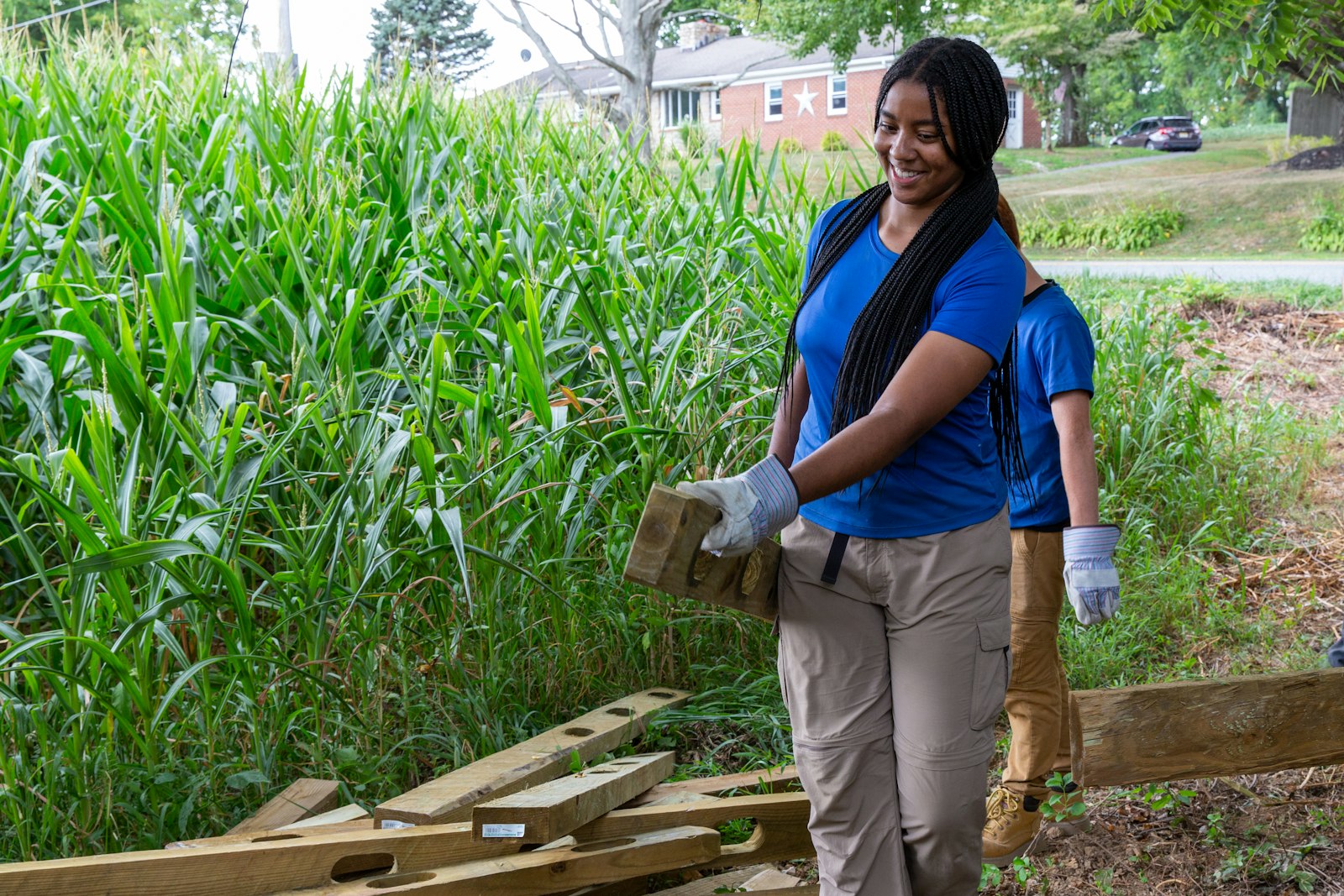
“I’m Native American. I’m Ramapough Luunape. We’re always trying to clean up [our land]. That’s just part of me.”
That’s Mahalia Gorham. When she served on the crew in the summer of 2022, she was 16, going into her junior year of high school. She first heard about the Musconetcong project when Chief Mann shared the SCA opportunity at a Ramapough Luunape event.
While she’s working on the trail or at a Ramapough Luunape event, she doesn’t need to explain or justify her identity. She says it’s a different story at school. When she says she’s from New Jersey, her peers often ask, “But where are you really from?” And she explains, once again, she’s Native American. She’s from this land.
But Gorham continues fielding the questions -- educating, explaining, and sharing her story. In school whenever she has a cultural project, she chooses to feature her tribe’s powwows, foods, and traditions.
“I find it important to educate people because they’re like, ‘Oh, they still exist?’ That’s all I hear,” says Gorham. “It’s important to tell people, yes, we’re still here and teach them about us.”
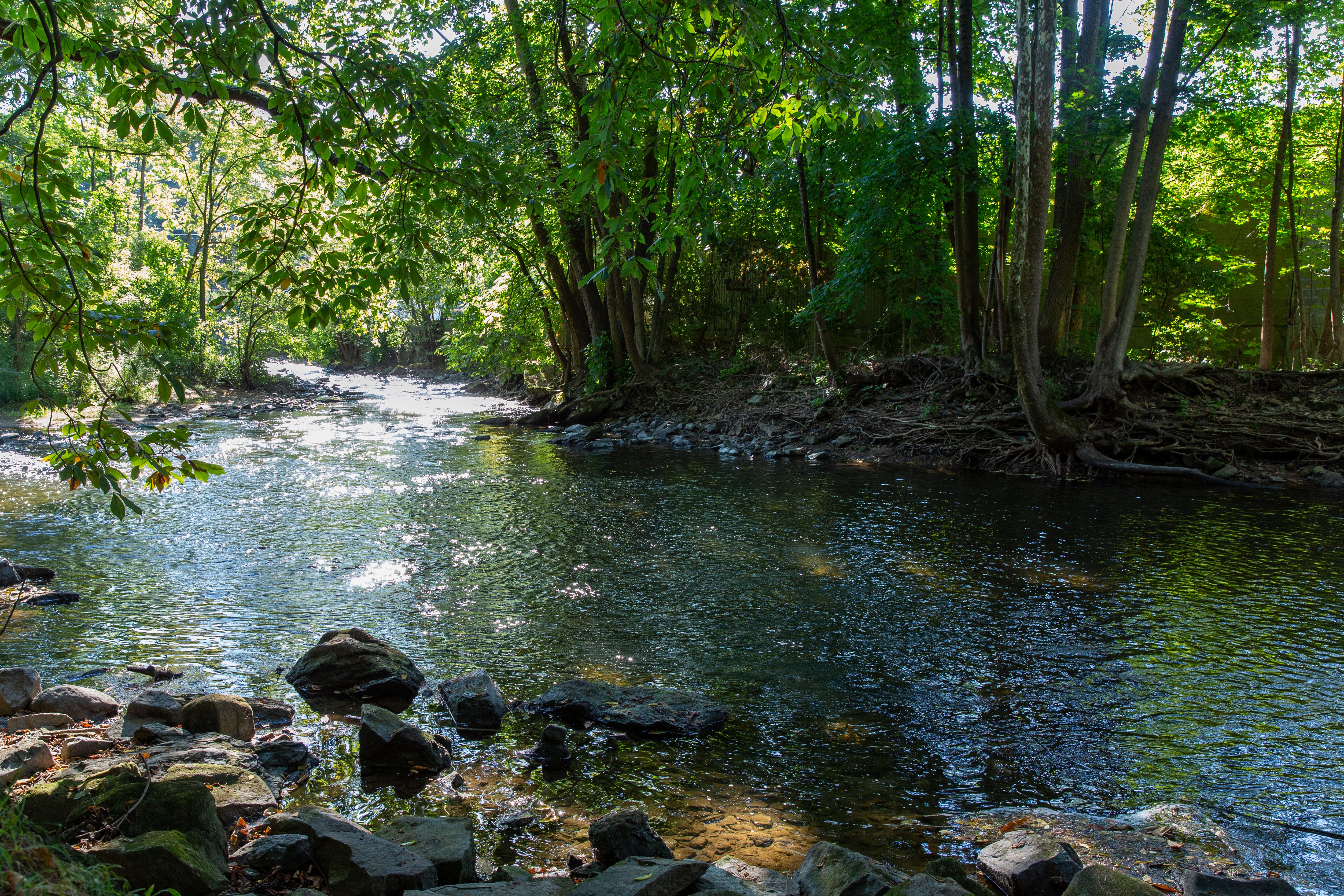
For Gorham, she hopes that her work on the Musconetcong Wild and Scenic River will help tell that story — that the Ramapough Luunape are here and they continue to inhabit this land. And she hopes they will continue to inhabit this land for years to come.
“This is where I’m going to grow up, and I feel that it’s our job to make it a better place,” says Gorham. “This is our Earth. This is what we have. We have to take care of it.”
THANKS TO OUR PARTNERS
Generous funding from Communities and Workforce supporting partners Carhartt, Winnebago, and Winnebago Industries Foundation supports the Service Corps program.
Since 2018, the National Park Foundation has granted more than $15 million to service corps, including support from Communities and Workforce supporting partners Carhartt, Winnebago, and Winnebago Industries Foundation, and partners American Express, Free People, Nature Valley, Publix Super Markets, and REI Co-op. Additional funding is provided by The JPB Foundation, and many other donors.
Related Content
